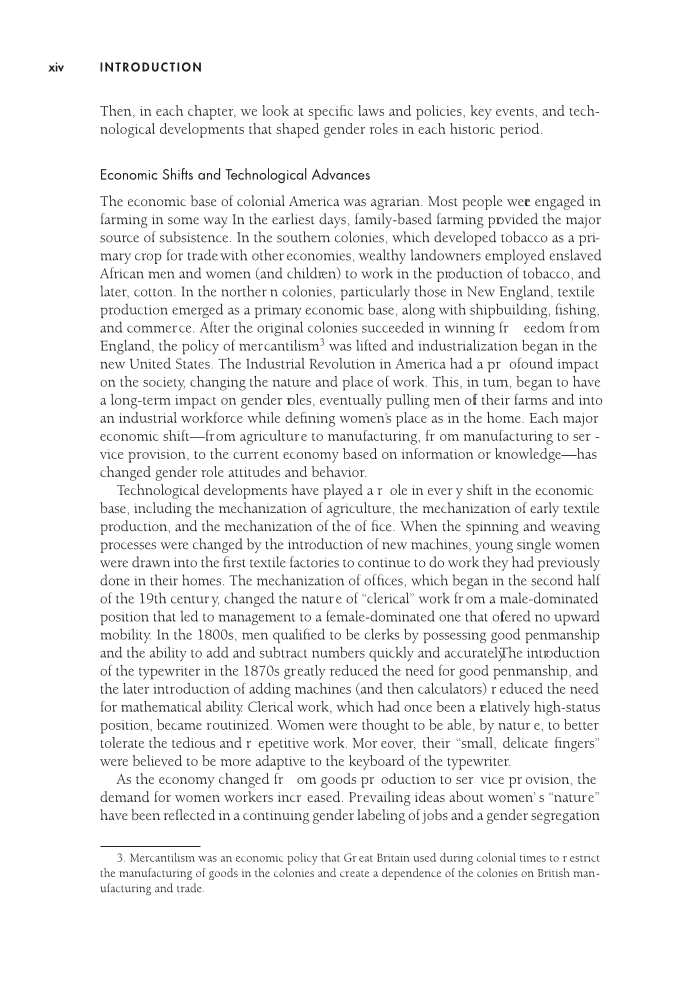xiv Introduction Then, in each chapter, we look at specific laws and policies, key events, and tech- nological developments that shaped gender roles in each historic period. Economic Shifts and Technological Advances The economic base of colonial America was agrarian. Most people wer e engaged in farming in some way. In the earliest days, family-based farming provided the major source of subsistence. In the southern colonies, which developed tobacco as a pri- mary crop for trade with other economies, wealthy landowners employed enslaved African men and women (and children) to work in the production of tobacco, and later, cotton. In the norther n colonies, particularly those in New England, textile production emerged as a primary economic base, along with shipbuilding, fishing, and commerce. After the original colonies succeeded in winning fr eedom from England, the policy of mercantilism3 was lifted and industrialization began in the new United States. The Industrial Revolution in America had a pr ofound impact on the society, changing the nature and place of work. This, in turn, began to have a long-term impact on gender roles, eventually pulling men off their farms and into an industrial workforce while defining women’s place as in the home. Each major economic shift—from agriculture to manufacturing, fr om manufacturing to ser - vice provision, to the current economy based on information or knowledge—has changed gender role attitudes and behavior. Technological developments have played a r ole in ever y shift in the economic base, including the mechanization of agriculture, the mechanization of early textile production, and the mechanization of the of fice. When the spinning and weaving processes were changed by the introduction of new machines, young single women were drawn into the first textile factories to continue to do work they had previously done in their homes. The mechanization of offices, which began in the second half of the 19th century, changed the nature of “clerical” work fr om a male-dominated position that led to management to a female-dominated one that of fered no upward mobility. In the 1800s, men qualified to be clerks by possessing good penmanship and the ability to add and subtract numbers quickly and accurately . The introduction of the typewriter in the 1870s greatly reduced the need for good penmanship, and the later introduction of adding machines (and then calculators) r educed the need for mathematical ability. Clerical work, which had once been a relatively high-status position, became routinized. Women were thought to be able, by natur e, to better tolerate the tedious and r epetitive work. Mor eover, their “small, delicate fingers” were believed to be more adaptive to the keyboard of the typewriter. As the economy changed fr om goods pr oduction to ser vice pr ovision, the demand for women workers incr eased. Prevailing ideas about women’ s “nature” have been reflected in a continuing gender labeling of jobs and a gender segregation 3. Mercantilism was an economic policy that Gr eat Britain used during colonial times to r estrict the manufacturing of goods in the colonies and create a dependence of the colonies on British man- ufacturing and trade.
Document Details My Account Print multiple pages
Print
You have printed 0 times in the last 24 hours.
Your print count will reset on at .
You may print 0 more time(s) before then.
You may print a maximum of 0 pages at a time.

































































































































































































































































































































































































































































































































































































































































